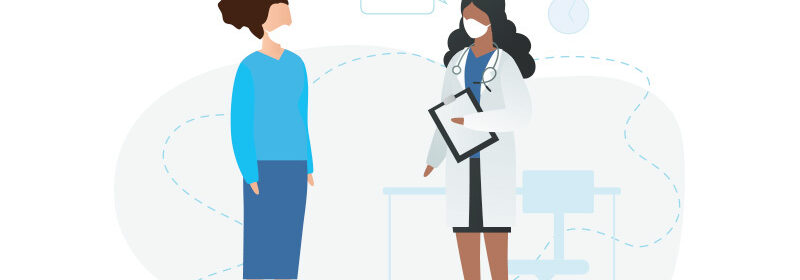BRIDGING THE GAP BETWEEN LANGUAGE AND HEALTHCARE

Bridging the Gap Between Language and Healthcare
Joanna Zhu – In a study conducted in 2005, it was found that families who have a language barrier were significantly more at risk of experiencing a serious medical event compared to families who didn’t have a language barrier. In 2019, about 1 in 13 people in the U.S. had limited English proficiency (LEP). Accounting for 81 percent of people who had LEP, immigrants made up the majority of this group. Since then, the number of people with LEP has grown even larger. The existence of a language barrier poses a great obstacle for people with LEP getting adequate and high-quality healthcare at an affordable cost.
It is not uncommon for misunderstandings to arise between a physician and a patient with LEP. These situations can lead to the physician having an incomplete understanding of the patient’s condition, which can cause misdiagnoses, increased unnecessary testing, and delayed treatment. Not only is this costly for the patient, but it can also have severely negative impacts on their health.
Additionally, the language barrier may cause people with LEP to visit the doctor and use preventative care services less often or not at all due to fear of being a burden or experiencing stigma and discrimination. In the U.S., part of the solution to this health disparity lies in Title VI of the Civil Rights Act of 1964, which established the legal right to access healthcare in patients’ preferred language via an interpreter or interpretation service. Having interpretation services is very effective and has increased the quality of patient care and the number of physician visits for these patients. However, due to lack of financial resources, interpretation services are sometimes unavailable or inadequate, such as in the case of telephone and video interpreter services, where the clear communication of information can be affected by an unstable connection. Some newer solutions include MediBabble, an app created specifically for the purpose of translating medical instructions, medical history questions, etc. in a fast and convenient manner.
On October 6, 2022, in a press release by the U.S. Department of Health and Human Services (HHS), it was announced that four million dollars in grants would be given to 11 organizations to develop and test methods of informing people with LEP about language services in healthcare as part of a three-year initiative called Promoting Equitable Access to Language Services in Health and Human Services. Some ways that these methods will be tested include policy development and implementation, technology, and education for medical personnel. Hopefully, with this initiative, the health disparity caused by language barriers will be lessened and more people will get the proper care that they need and deserve.
Copy editor – Medhini Ramesh
